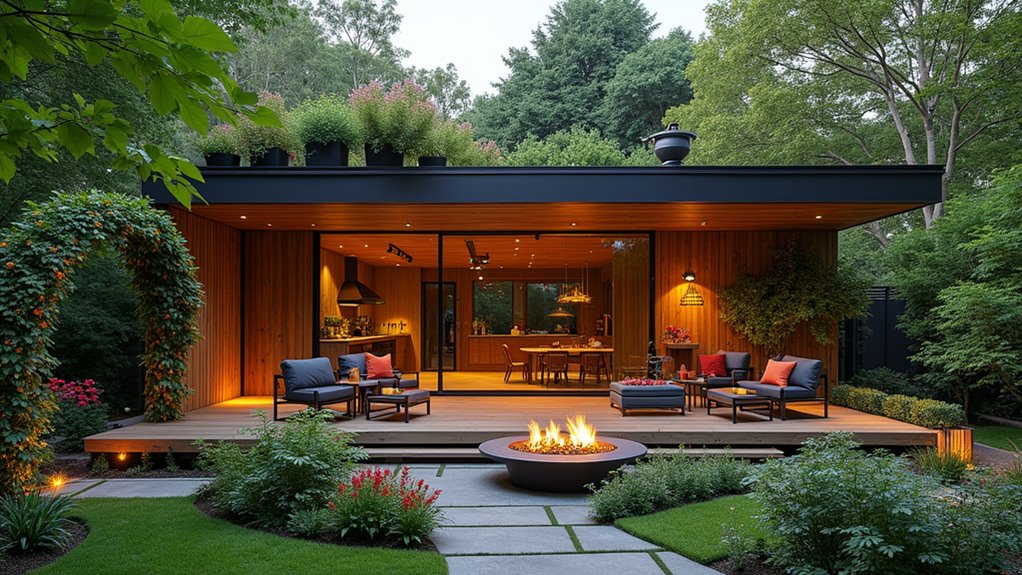Innovative garden house design combines smart layouts with sustainable features to create multifunctional outdoor spaces. By optimizing garden layouts for sunlight and incorporating natural elements like native plants, a harmonious environment is achieved. Integrating technology enhances convenience, offering automated systems for irrigation and lighting. Eco-friendly materials elevate aesthetics, while flexible structures allow for various uses. Such a design fosters tranquility and functionality, inviting exploration of more creative possibilities for enhancing outdoor living experiences.
Key Takeaways
- Design multifunctional garden rooms for activities like dining or relaxation, utilizing flexible structures to adapt to various needs.
- Implement sustainable features like rainwater harvesting and native plants to enhance biodiversity and promote environmental stewardship.
- Create inviting pathways that connect distinct zones, ensuring smooth transitions between different functional areas in the garden.
- Incorporate natural materials like reclaimed wood and stone to bring warmth and an organic feel to your garden house design.
- Utilize smart technology for automated irrigation and voice-controlled features to enhance usability while maintaining eco-friendly practices.
Smart Garden Layouts for Enhanced Spaces
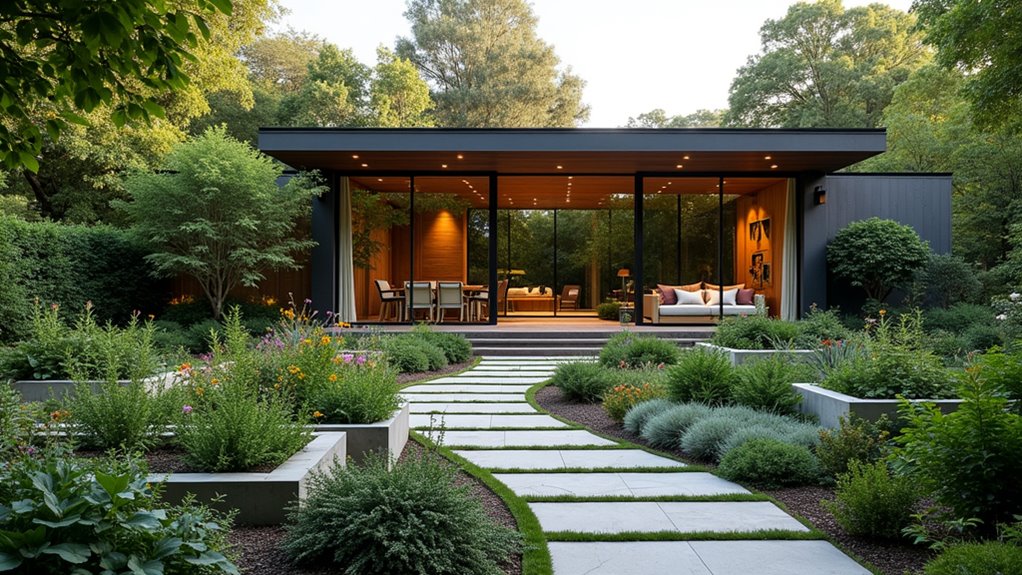
How can garden layouts be optimized to create enhanced outdoor spaces? By strategically analyzing sun patterns throughout the day, designers can determine ideal locations for various activities. Morning sun can be harnessed for breakfast areas, while midday shade becomes essential for relaxation spots. Utilizing zoning techniques allows the division of the garden into functional areas, such as dining, growing, and leisure zones, connected by inviting pathways. Implementing movable furniture and adaptable shade structures ensures versatility in outdoor experiences. Furthermore, physical edging and clear boundaries create a sense of order, enhancing both aesthetics and maintenance. This symbiotic approach not only increases usability but also aligns with the home’s architecture, fostering a cohesive and visually pleasing environment while ensuring that raised garden beds are accessible for all gardeners. Additionally, incorporating cover crops into the garden design can significantly improve soil health, which is vital for sustaining healthy plants in a well-planned layout.
Sustainable Features That Benefit the Environment
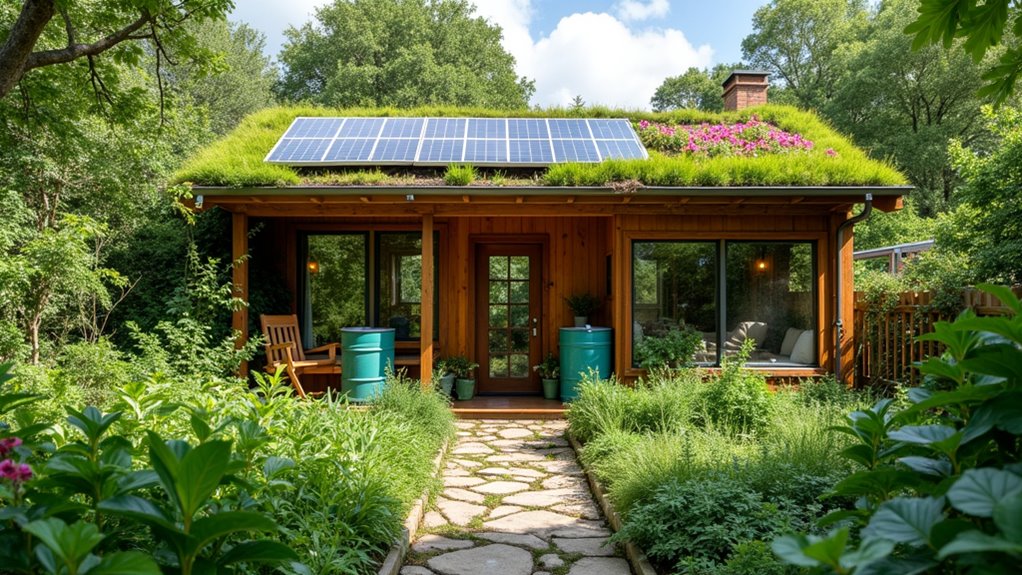
As garden design increasingly prioritizes environmental sustainability, innovative features emerge that not only enhance aesthetic appeal but also foster ecological responsibility.
Utilizing green materials, structures crafted with high-performance windows and recycled components significantly reduce energy consumption while enhancing indoor climate control.
Eco-friendly designs incorporate native vegetation, promoting biodiversity and attracting local wildlife, thereby minimizing the need for chemical treatments.
Additionally, implementing passive solar strategies, such as deciduous trees and effective shading, lessens reliance on HVAC systems.
Water conservation is achieved through rainwater harvesting and drought-tolerant planting, ensuring responsible resource use.
Lastly, the integration of renewable energy sources, such as solar panels, exemplifies a commitment to environmental stewardship in garden house design. The integration of natural materials creates aesthetic appeal while promoting sustainable living practices.
Integrating Technology for Modern Convenience
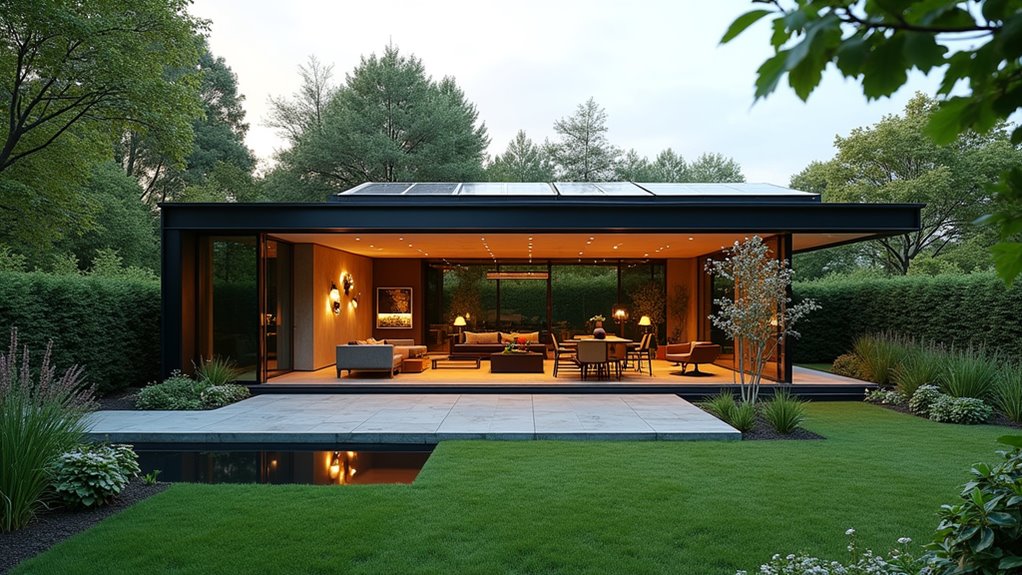
Integrating technology into garden house design not only enhances convenience but also elevates the overall user experience.
Smart automation systems centralize control over various garden elements, from lighting to irrigation. Users can manage multiple devices effortlessly through mobile apps or desktop interfaces, reducing operational complexity.
Voice control capabilities enable hands-free management of garden features, allowing for personalized settings suited to individual preferences.
Meanwhile, automated irrigation systems optimize water use based on real-time soil moisture data, promoting sustainability.
Outdoor entertainment integration enhances aesthetic appeal, incorporating weatherproof screens and immersive audio experiences.
Together, these technologies offer a seamless blend of functionality, security, and entertainment, ensuring that garden houses function as both practical and luxurious living spaces.
Incorporating Natural Elements for Tranquility
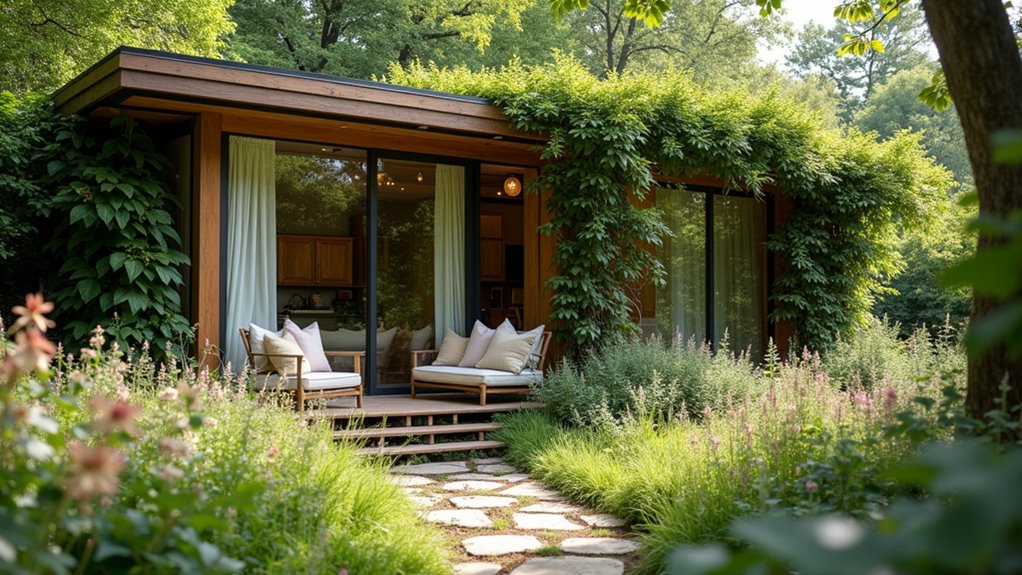
Incorporation of natural elements into garden house design fosters a serene atmosphere, effectively bridging the gap between built environments and the surrounding nature. The use of natural textures, such as wood and stone, enhances warmth and depth. Thoughtful plant arrangements, featuring native species and lush greenery, contribute to biodiversity and visual appeal. Additionally, employing eco-friendly designs can further enhance the integration of your home with its natural surroundings.
| Feature | Description | Benefits |
|---|---|---|
| Wood Accents | Incorporate wooden furniture | Adds warmth and character |
| Stone Features | Use stone for patios or fireplaces | Creates a natural ambiance |
| Native Species | Plant local flora | Promotes ecological balance |
| Vertical Gardens | Utilize vertical planters | Maximizes space, enhances aesthetics |
| Natural Flooring | Implement reclaimed wood or terracotta | Ensures a cozy, organic feel |
This blend nurtures tranquility, making garden houses harmonious retreats.
Creating Functional Spaces for All Activities
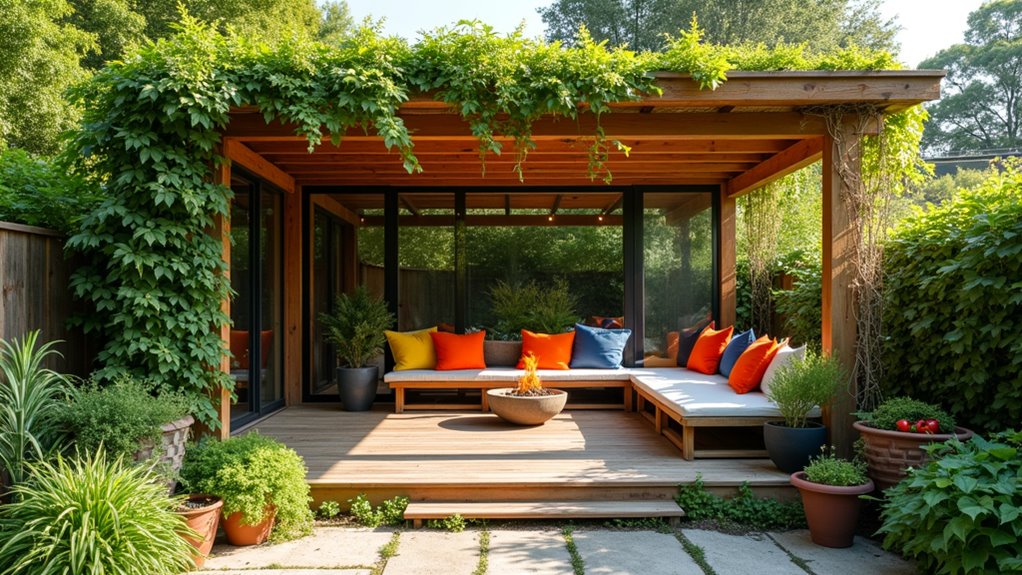
The tranquil atmosphere fostered by natural elements can seamlessly coexist with the demand for versatile functionality in garden house design.
Natural elements create a serene backdrop that harmonizes effortlessly with the need for functional garden house designs.
Creating distinct areas through garden zoning enables the establishment of multifunctional gardens, allowing a seamless integration of spaces tailored for dining, leisure, and work. For instance, garden rooms can serve as dining enclaves while outdoor kitchens enhance hosting capabilities.
Flexible structures, like modular designs and shed conversions, facilitate this adaptability, transforming spaces into home offices or meditation areas. Incorporating smart technology, energy-efficient systems, and aesthetic furniture further enhances usability and comfort. Additionally, utilizing sustainable features ensures that these spaces remain environmentally friendly while providing comfort and functionality.
As a result, these thoughtfully designed multifunctional spaces not only improve the garden’s utility but also contribute to the overall well-being of occupants, merging beauty with practicality.

